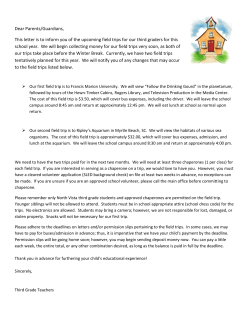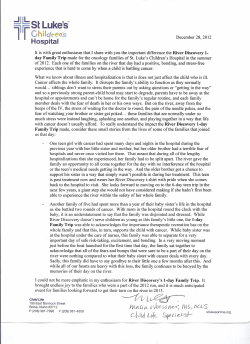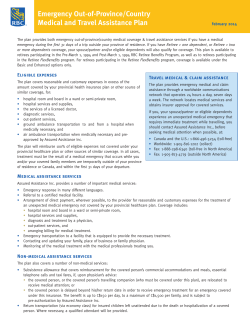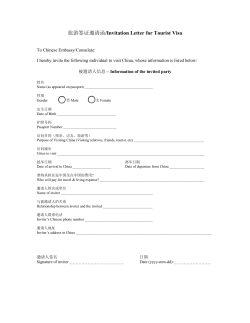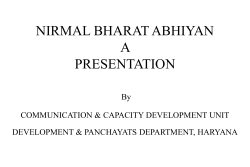
The Role of Rest in the NBA Home-Court Advantage
The Role of Rest in the NBA Home-Court Advantage
Oliver Entine
Department of Statistics, The Wharton School of the University of Pennsylvania,
3730 Walnut St., Philadelphia, PA 19104, U.S.A.
entine4@wharton.upenn.edu
Dylan S. Small
Department of Statistics, The Wharton School of the University of Pennsylvania,
3730 Walnut St., Philadelphia, PA 19104, U.S.A.
dsmall@wharton.upenn.edu
November 30, 2007
Abstract
To date, the factors which lead to the very large home court advantage characteristic
of the NBA have not yet been well isolated. This study analyzes the relationship between
that home court advantage and the comparatively fewer days of rest between games that
the NBA schedule imposes on visiting teams. A statistical model has been developed
and applied to the NBA data for the 2004-2005 and 2005-2006 seasons to estimate the
importance of the effect of rest on the magnitude of the home court advantage. The
results indicate that lack of rest for the road team, while not a dominant factor, is an
important contributor to the home court advantage in the NBA.
1
1
Overview
A fact well known to players, fans, and professional gamblers alike is that for virtually every
team sport, there exists a significant home court advantage. For example, the home team
wins approximately 53% of the time in major league baseball (1991-2002), 55% of the time
in the National Hockey League (1998-2003), 58% of the time in the National Football League
(2001-2005), and a dramatic 61% of the time in the National Basketball Association (2001-02
through the 2005-06 seasons). Nevertheless, despite the importance of this effect for both
teams and spectators, little is understood about the root causes of this phenomenon.
Two survey articles on the home court advantage in sports are Courneya and Carron
(1992), and Nevill and Holder (1999). Courney and Carron identified four factors that could
account for home-court advantage: crowd factors, familiarity with local conditions, travel
factors, and effects related to rule differences for the home versus visiting team. Recent
studies have examined the effect of rule differences (Simon and Simonoff, 2006), the variation
in the home court advantage from team-to-team (Horville, Smith, and Rubin, 1994), and
how the home-court advantage accumulates over the course of a game (Jones, 2007). In this
study, we consider the role of travel factors in the home-court advantage in NBA basketball.
The NBA basketball schedule favors the home teams by minimizing the number of backto-back games that they must play. The schedule is tailored to ensure that, for the most
part, the home teams play no more frequently than once every two days. In contrast, as will
be shown below, the NBA schedule for the visiting teams is much more stressful, frequently
requiring them to play games on successive days, which, in principle, should make them
more tired than their home team opponents. Table 1 presents a comparison of the amount
of rest the league gives, on average, to each of the home and visiting teams. As can be seen,
visiting teams play more than twice as many back to back games than do the home teams.
Thus, during an 82 game season, each team plays only about 11.5 back-to-back games at
home, but about 27 back-to-back games while away. With this much disparity, one might
conjecture that this potentially powerful factor could be a major contributor to the large
home team advantage that is characteristic of the NBA.
This study analyzes all of the games for the NBA over the 2004-05 and 2005-06 seasons,
2
Days of Rest Home Team
Visiting Team
0
15%
33%
1
58%
49%
2
19%
13%
3
8%
5%
Table 1: Distribution of Days of Rest for Home and Visiting Teams.
a total of 2415 games in all (excluding postseason games as well as opening games in which
both teams are roughly equally rested). For these games, the home team won 60.5 % of
the time. Our question is, how much of this home court advantage can be attributed to the
lack of rest experienced by the teams when on the road? This study will address specifically
the following three questions: 1) What is the impact of rest? 2) If the distribution of road
team rest was set equal to the distribution of home team rest, how much of the home court
advantage would go away? And 3) Does the length of time a team has been on a road trip
have an effect above and beyond its rest? In Section 2, we introduce our baseline linear
model for predicting the home team’s margin of victory based on team’s strength and its
home-court advantage. In Section 3, we generalize the model slightly, and see whether or not
the amount of rest affects both teams equally. Section 4 answers the question of how much
of the home court advantage can be attributed to the home-team’s rest, as opposed to other
less tangible factors. Section 5 considers the impact of the visiting team’s travel schedule, in
particular, the number of consecutive games the visitors have played on their current road
trip. Finally, Section 6 introduces a logistic regression framework to assess the effect the
teams’ respective rest has on the home teams’s chances of winning the game outright.
2
The Model
Although the home court advantage is usually described in terms of games, it can also
be thought of as a factor which increases the margin of victory of the home teams when
compared to that experienced by teams on the road. Specifically, analysis of the two seasons
3
of data shows that the average margin of victory experienced by the home teams over the
visitors was 3.6 points. The analysis below is designed to determine how many, of those
points, if any, arise from the lack of rest of the visiting teams.
Our starting model relates the home team’s margin of victory in points to several variables. These include the strengths of each team for that given year, the home court advantage
for the host team, and the amount of rest each team has coming into the game as measured
by number of days off in between contests. While Harville and Smith (1994) use a random
effects model to describe the individual strengths of each team, here we just consider all of
the factors, including team strength, as fixed effects.
Yij = θi − θj + δi + β1 ∗ I[Resti = 0] + β2 ∗ I[Resti = 1] + β3 ∗ I[Resti = 2]
−β1 ∗ I[Restj = 0] − β2 ∗ I[Restj = 1] − β3 ∗ I[Restj = 2] + (1)
Yij = Point Margin for home team i over road team j
θi = Strength of home team i
θj = Strength of road team j
δi = Home-court advantage for team i if both teams have equal rest
β1 , β2 , β3 = Effect of rests of zero, one, and two days respectively
compared to rest of three or more days.
∼ N (0, σ 2 )
Notice that in this particular model, there is an underlying assumption that the effect of
0, 1, or 2 days rest is the same for both the home and visiting teams, an assumption we will
justify shortly. Applying this model to the data from the 2004-05 and 2005-06 seasons, one
gets the point estimates for the coefficients β1 , β2 , and β3 shown in Table 2.
Thus, all things being equal, a team playing a game the day immediately following another
game should be expected to score roughly 1.77 points (β1 ) less than if that same team has
more than three days of rest between contests. In contrast, playing a game after only one
day off reduces the team’s scoring ability by only 0.13 points (β2 ) compared to if the team
had three or more days off. Oddly enough, the data also indicates that a team with two days
4
Rest Coefficient
Estimate
SE
p-value
β1
-1.7719
0.8268
0.0322
β2
-0.1328
0.7924
0.8669
β3
0.3236
0.8516
0.7040
Table 2: Point-Estimates, Standard Errors, and P-Values for the Rest Coefficients
of rest actually seems to improve its scoring margin by about 0.32 points (β3 ). However,
the analysis indicates that only the β1 coefficient is significant. That is, there seems to be a
significant (albeit a small) detrimental effect to playing games on consecutive nights, but no
further benefit of rest once the team has one or more days of rest.
3
Does Rest Have a Different Effect for the Home and
Road Teams?
A more general model than (1) that we could use is to have different parameters for the rest
coefficients of the home team versus those for the visiting team.
Yij = θi − θj + δi + β1 ∗ I[Resti = 0] + β2 ∗ I[Resti = 1] + β3 ∗ I[Resti = 2]
−β4 ∗ I[Restj = 0] − β5 ∗ I[Restj = 1] − β6 ∗ I[Restj = 1] + (2)
Does this model represent a significant improvement over (1) which has the constraints
β1 = β4 , β2 = β5 , and β3 = β6 ? Table 3 below shows a comparison of the results obtained
with both the unconstrained and constrained models.
Model
Degrees of Freedom
Error Sum of Squares
F-Statistic
P-Value
Unconstrained
2291
281539
0.63997
0.4107
Constrained
2294
281774
Table 3: Sum of Squares Comparison for Unconstrained and Constrained Model
The comparison shows that the removal of the constraints on the β’s leaves the error
sum of squares essentially unchanged, thereby indicating that the assumption that the effect
5
of rest on performance is the same for both home and visiting teams has no appreciable
impact on the results of the study. Thus, the application of this constraint to our model is
appropriate.
4
Amount of Home Court Advantage Explained by the
Differences in Rest
Over the 2004-05 and 2005-06 seasons, the overall home court advantage was roughly 3.24
points per game. What would happen though if both the home teams and the road teams
had the same distribution of rest? Our model lets us answer this question. With these two
P30
1
distributions equal, the home court advantage would be given by γ = 30
i=1 δi (there are
30 NBA teams). Our point estimate of γ from model (1) is 2.93 (points per game), with a
95% Confidence Interval (CI) of (2.46 , 3.40). Thus, the different distribution of rest for the
home and road teams is estimated to only account for about 0.3 points or about 10.5% of
the overall home court advantage. By bootstrapping the residuals (Efron and Tibishirari,
1986), we get a 95% CI of (5.2% , 17.7%) for this percent contribution.
5
Does Length of Road Trip Matter?
In addition to a lack of rest, a road team’s overall fatigue might also be influenced by the
length of a team’s current road trip. A team that plays several consecutive games in opposing
cities must deal with constant travel aggravation as well as jet-lag from making frequent longdistance flights over a relatively short period of time. Thus we ought to consider whether
part of the NBA’s home-court advantage stems not just from the days between rest, but also
by the fact that the road team has spent much of its time traveling. When we include in
the model an indicator variable corresponding to length of road trip, measured as number
of games the visitor has played on the road since its last home game (including the current
game, so that every road-trip value is at least 1), we get the following adjustments to the
home court point advantage.
There appears to be roughly a 1-point boost for the home team when the opponent is
6
Length of Road-Trip Indicator
Estimate
SE
p-value
1st Game of trip
0
NA
NA
2nd Game of trip
1.0417
0.5740 0.06968
3rd Game of trip
0.1268
0.7254
0.8612
4th Game of trip or longer
-0.07701
0.7180
0.9146
Table 4: Point-Estimates, Standard Errors, and P-Values for the Length of Road-trip Coefficients
playing its second consecutive game on the road, with a significance-level of 7%. For road
trips longer than that, there is no longer much indication of a contribution of home court
advantage associated with the length of such trip.
6
Effect of Rest on Winning
So far, we have concluded that having three or more days of rest can improve a team’s score
margin by as much as 1.77 points per game. However, in most NBA games, the eventual
margin of victory tends to be much larger than 1 or 2 points. Thus, one might ask whether
the number of days of rest variable, though significant in altering final point margins, has
a significant effect on a game’s final outcome (victory versus defeat). Here, we construct a
model with the same variables as before, only now, we use a logistic regression framework
to predict the effect of rest on the probability of a team winning the game.
7
Yij = 1 if home team i wins, 0 if visiting team j wins
P (Yij = 1) = expit{θi − θj + δi + β1 ∗ I[ Home Rest = 0 ] + β2 ∗ I[ Home Rest = 1 ]
+β3 ∗ I[ Home Rest = 2] − β1 ∗ I[ Road Rest = 0 ] − β2 ∗ I[ Road Rest = 1 ]
−β3 ∗ I[ Road Rest = 2]}
where expit(x) =
ex
1 + ex
θi = Strength of home team
θj = Strength of away team
δi = Home-court advantage for team i if both teams have equal rest
β1 , β2 , β3 = Effect of rests of zero, one, and two days respectively
compared to rest of three or more days
Estimate
95% CI
exp(β1 )
0.75
(0.53,1.06)
exp(β2 )
1.02
(0.73,1.41)
exp(β3 )
1.14
(0.80, 1.62)
This data indicates that playing back to back games compared to having rest of three or
more days multiplies the odds of winning by 0.75 (β1 ). While not quite significant at the 5%
level, this variable is significant at the 10% level, making it worthy of further consideration.
β2 and β3 are actually slightly larger than one, which would mean that the odds of a team
winning actually improves when the team has only one or two days of rest as opposed to
three or more. However, neither of these coefficients are statistically significant.
7
Conclusions
The fact that home teams in the NBA win so large a fraction of the time is quite a fascinating
observation since it implies that factors other than the skill of the competing teams play
critical roles in the outcome of games in professional basketball. We have examined one of
8
these factors, the travel factor, from two points of view, namely the effect of the fact that,
on balance, the traveling team has a schedule which provides fewer days of rests between
games, and that just being on the road an extended number of days could lead to a decrease
in athletic performance. Our analysis of the 2,415 games which took place in the 2004-2005
and 2005-2006 seasons of the NBA indicates that the travel schedule does seem to be a
real, although not dramatic factor contributing to the NBA’s home team advantage. On
average, for these two seasons, the home teams scored 3.24 more points than the visitors,
of which 0.31 points arise from the smaller amount of rest that the NBA schedule provides
the traveling team and 2.93 points are associated with other, non-related factors. The travel
schedule effect is most clearly illustrated by the fact that visiting teams with back to back
games are estimated to be 1.77 points worse off on average than visiting teams that are fully
rested. The data also suggest that traveling teams score one point less during their second
game on each trip, but this observation is only weakly significant.
When the issue of the home team advantage was studied with respect to the number of
games won or lost, as opposed to the number of points scored, the data once again showed
the importance of the tight schedule faced by the traveling teams. As with the margin of
victory measured in points, the condition indicating the highest effect was when the visiting
team played the second of a back to back pair of games. In this case, the odds of the visiting
team winning were decreased to an estimated 75% of those corresponding to the fully rested
state, although the level of significance was weak. Based on these analyses, we conclude that
the extraordinary high home court advantage enjoyed by NBA teams is partially explained
by the tendency of the NBA schedules for the traveling teams to have reduced rest, but that
the bulk of the advantage arises from other, non-related factors.
References
Courneya, K.S. and Carron, A.V. (1992), ”The Home Advantage in Sport Competitions: a
Literature Review,” Journal of Sport and Exercise Psychology, 14, 13-27.
Efron, B. and Tibshirani, R.J. (1986), ”Bootstrap Methods for Standard Errors, Confidence
Intervals, and Other Measures of Statistical Accuracy,” Statistical Science, 1, 54-75.
Harville, D.A., Smith, M.H. and Rubin, D.R. (1994), “The Home-Court Advantage: How
9
Large Is It and Does it Vary from Team to Team?,” The American Statistician, 48,
22-29.
Jones, M.B. (2007), ”Home Advantage in the NBA as a Game-Long Process,” Journal of
Quantitative Analysis in Sports, 3, 1-14.
Nevill, A.M. and Holder, R.L. (1999), “Home Advantage in Sport: An Overview of Studies
on the Advantage of Playing at Home,” Sports Med, 4, 221-236.
Simon, A.S. and Simonoff, J.S. (2006), ”’Last Licks’: Do They Really Help?,” The American
Statistician , 60, 13-18.
10
© Copyright 2025








